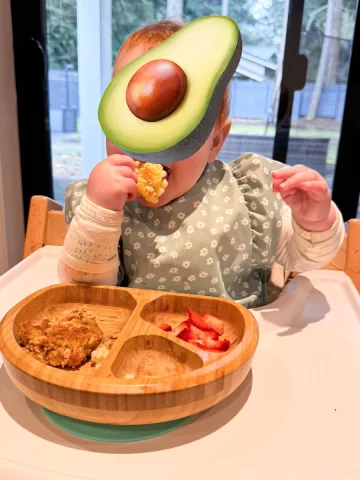Introduction
Today, we’re delving into the topic of calcium and its important role in the growth and development of your little ones.
Jump to:
- Introduction
- What is Calcium and Why is it Important?
- When to Start Introducing Calcium-rich Foods:
- How much Calcium?
- Calcium-Rich Foods for Babies and Toddlers:
- Calcium Content in Select Foods
- Incorporating these foods into your little ones diet
- Prefer a quick visual? Check out this Infographic on Calcium for Kids
- Conclusion
What is Calcium and Why is it Important?
Calcium is a mineral critical for the formation and maintenance of strong bones and teeth. During the early years of life, when bone development is at its peak, it is important to ensure adequate calcium intake in order to build a solid foundation for your child’s bone health.
When to Start Introducing Calcium-rich Foods:
Babies age 0-6 months can meet their calcium needs from breastmilk or formula. As your baby transitions to solid foods around 6 months (or when they begin to show signs of readiness), introducing calcium-rich options is important for healthy bone development.
How much Calcium?
Here is a table of the amount of calcium that is recommended for kids of varying ages:
| Children 7-12 months | 260mg/day |
| Children 1-3 years | 700mg/day |
| Children 4-8 years | 1000mg/day |
Calcium-Rich Foods for Babies and Toddlers:
- Dairy Foods: Dairy products like yogurt, cheese, and fortified milk are great sources of calcium for your child’s diet. Or, if your child is unable to have dairy foods, choose fortified plant-based alternative options.
- Leafy Greens: Kale, collard greens, and broccoli are great plant-based sources of calcium.
- Fortified Foods: Opt for calcium-fortified cereals, juices, and tofu to boost calcium intake.
- Canned Salmon and Sardines with bones: These canned fatty fish varieties with bones in are not only rich in omega-3s but also provide a good amount of calcium. It is ok for the bones to be consumed in canned foods because the fish has been cooked at incredibly high temperatures making the bones very soft. Please note: for fresh fish that is not canned, you definitely want to remove the bones!
- Chia Seeds: Sprinkle chia seeds into yogurt or blend them into smoothies for an added calcium punch.
Calcium Content in Select Foods

Incorporating these foods into your little ones diet
Dairy foods can often be the easiest calcium-rich foods to incorporate. However, there are lots of non-dairy calcium rich foods! Here are some examples:

I have also specifically developed recipes that incorporate many of these calcium-rich foods so you can have confidence your little one is getting adequate calcium. Check out my Strawberry Calcium-Rich Smoothie as an example!
Prefer a quick visual? Check out this Infographic on Calcium for Kids

Conclusion
In terms of your child’s growth and development, calcium plays an important role. By introducing a variety of calcium-rich foods early on, you’re helping your little one build a foundation for strong and healthy bones.




